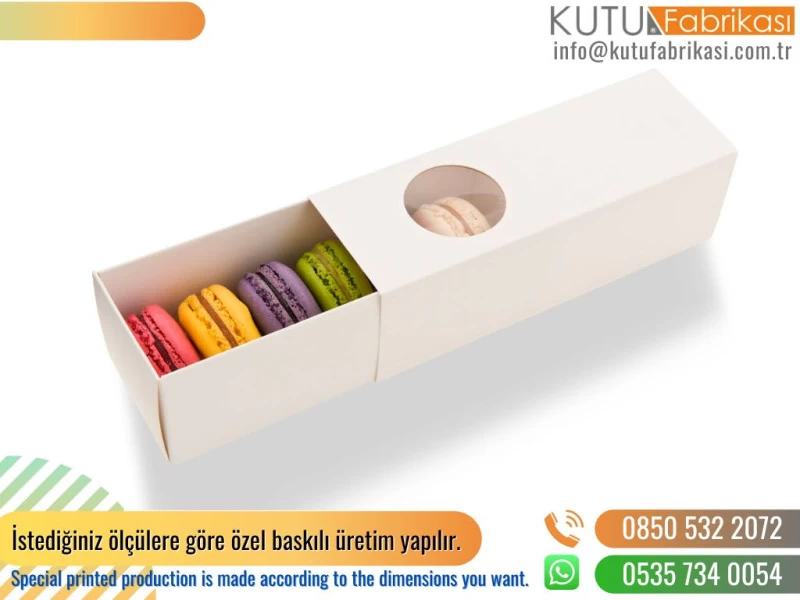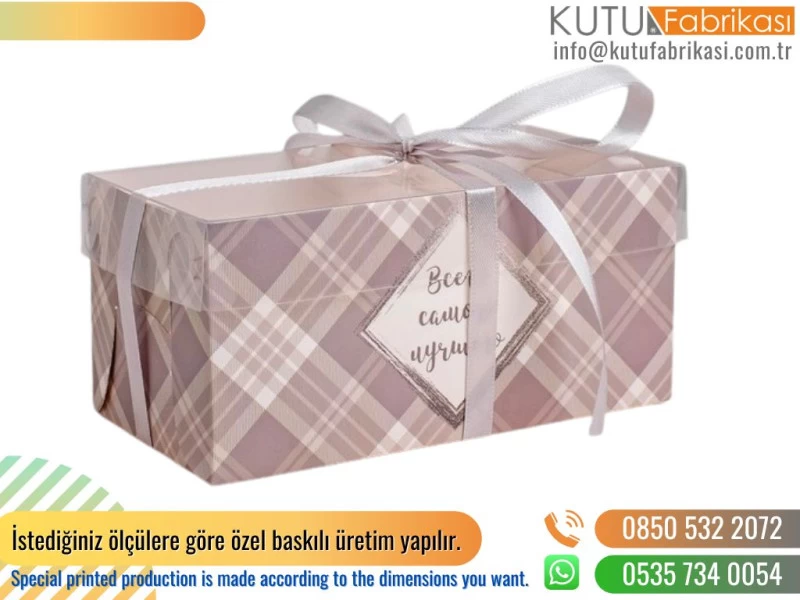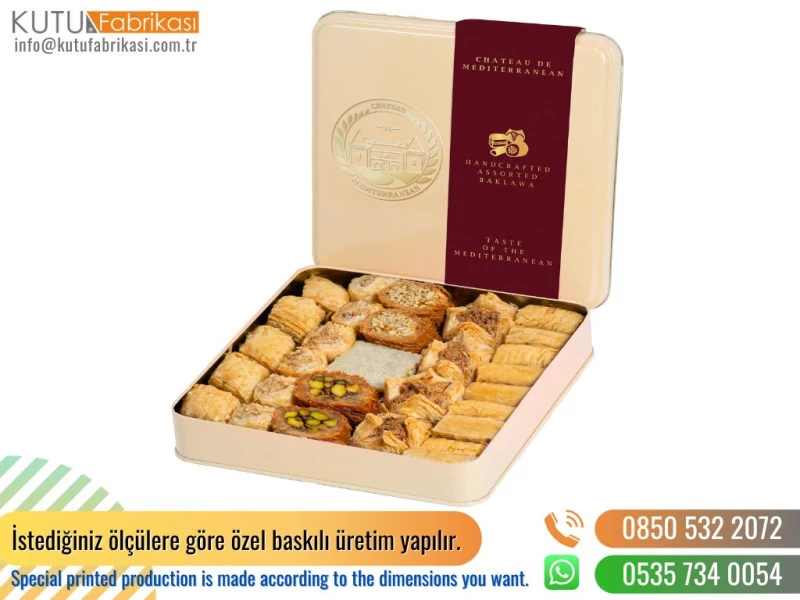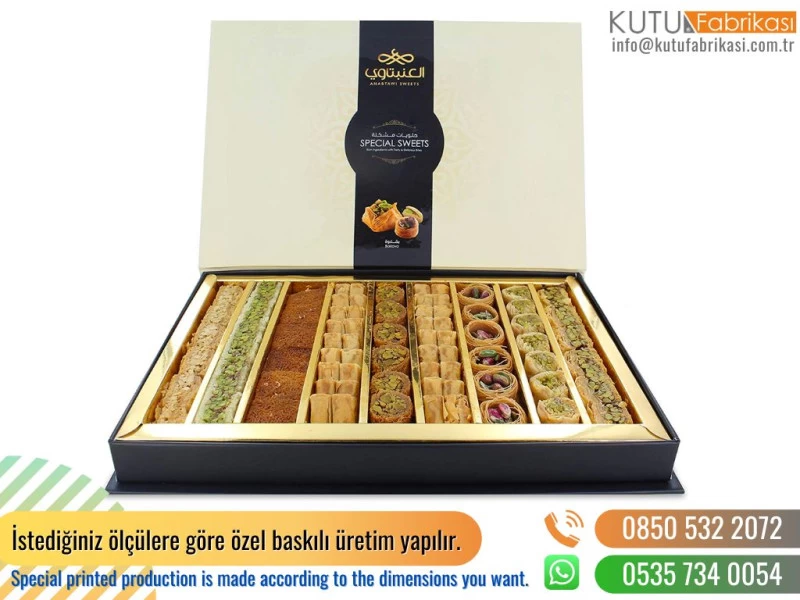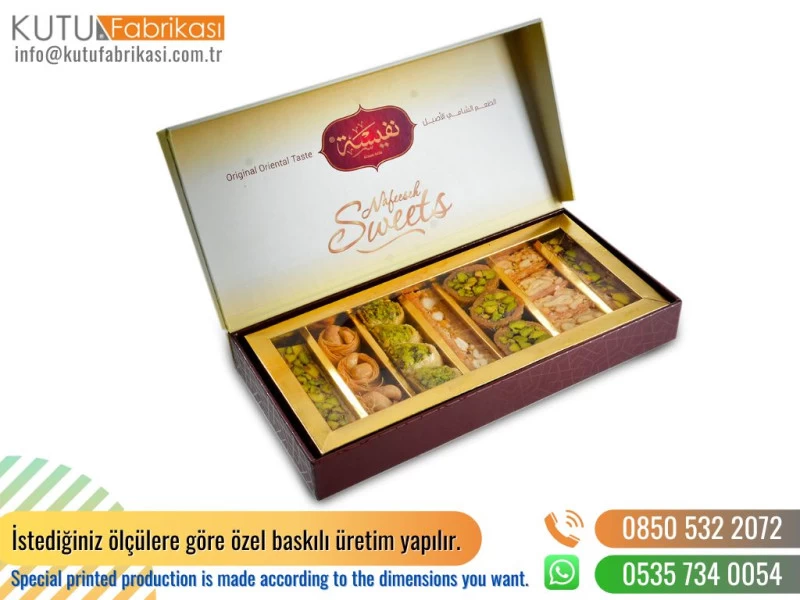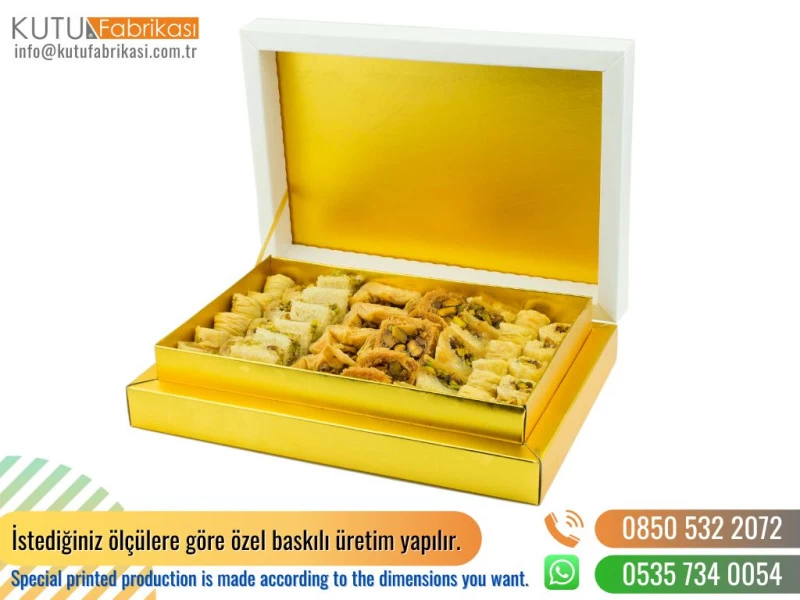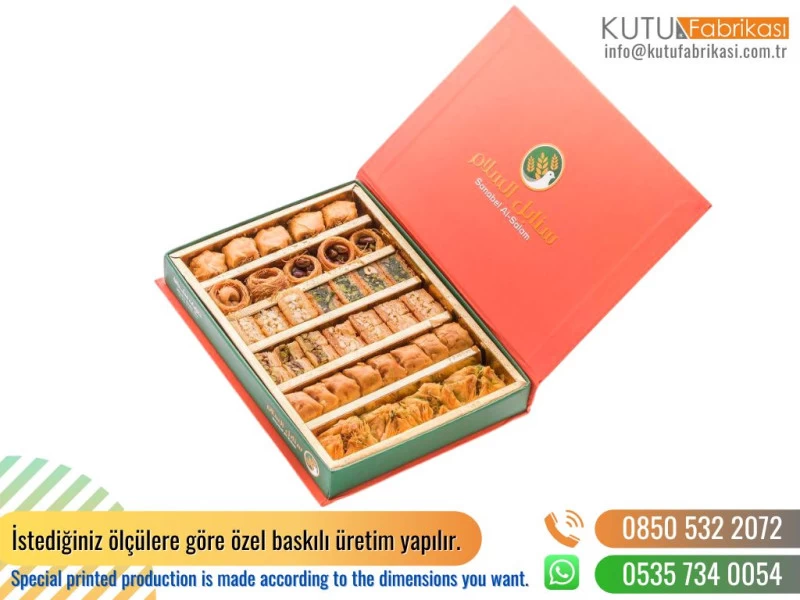Turkish Delight Boxes (16)
Turkish Delight Box Manufacturing
The allure of a perfectly crafted Turkish Delight box is unmatched, especially when it encases the sweet, scented treats known across the globe. But have you ever wondered about the intricacies involved in the creation of these ornate containers? As purveyors of fine packaging, we understand that a box is more than just a vessel—it's the first touchpoint of a brand's story and a silent ambassador of quality.
Why Packaging Matters for Turkish Delight
Historically, Turkish Delight boxes have been almost as important as the confections inside. They symbolize hospitality, tradition, and craftsmanship, heralding the rich Ottoman heritage. But in our modern world, these boxes do more than just carry sweets; they communicate the brand's attention to detail and can even affect the taste perception of the Turkish Delight itself.
The Choices of Material
When it comes to the materials used for Turkish Delight boxes, there's a vast array: paper, cardboard, velvet, metal, wood, plastic, PVC, and more. The question beckons, how do you choose the right one for your product? Think about the sensory experience you want to impart. A velvet-covered box whispers luxury, while a simple cardboard box promises eco-friendliness.
Frequently Asked Questions
- What makes a Turkish Delight box stand out?
- How to select the right material for your Turkish Delight packaging?
- How does packaging affect the flavor of Turkish Delight?
- Can you customize Turkish Delight boxes for special occasions?
Ensuring Your Turkish Delights Stand Out
The key to making your Turkish Delight boxes stand out is customization. Imagine a box that perfectly aligns with the cultural significance and sweetness of the delights inside. One could argue that a box that tells a story, even before it's opened, can make the confection inside taste even sweeter. In a sea of sameness, a unique box is memorable and might just be the reason a customer picks your delights over another.
Customization for Special Occasions
Is it true you can tailor-make a box for events or holidays? Absolutely! Special occasions call for exclusive designs. Whether it's a wedding, a festival, or a corporate gift, custom Turkish Delight boxes can be the canvas for your creativity.
Which feature do you value more in a Turkish Delight box: its eco-friendliness or the luxury feel?”
Benefits
- Enhanced Brand Perception
- Improved Customer Experience
- Increased Product Appeal
- Sustainability Options
Did you know that historically, some Turkish Delight boxes were so exquisitely made that they were considered valuable gifts in themselves, akin to fine jewelry? An opulent box could convey as much social status as the delights it harbored.
For more on the craftsmanship of these delightful confectionary containers, visit our Patisserie Box Manufacturing page to learn how we balance tradition with modern elegance.
Enhancing Flavor through Packaging
Skeptics might not believe it, but packaging can play a role in how we perceive taste. A premium box not only protects the Turkish Delights from environmental factors but also sets the stage for a sensory journey, from the first glance to the last bite.
An Eco-Conscious Choice
As the world becomes more environmentally conscious, so does the packaging industry. Turkish Delight boxes made from recyclable materials are not just a nod to sustainability; they're becoming a consumer expectation. It's a responsibility and a privilege to combine eco-friendliness with the opulent tradition of Turkish Delight packaging.
Now that we've wrapped up our foray into the alluring world of Turkish Delight boxes, we're curious – has this changed how you view the power of packaging, or does the taste of the delightful sweet inside remain the ultimate decider for you?
There are two ways to make windows in boxes. The first is with cellophane windows, the other with transparent PVC windows. For the cellophane window, first the inner cut to be the window is made, after the cellophane is covered, the outer cut is made. For the PVC window, the box cover is cut in one go and the PVC part is glued to the window part afterwards.
Turkish delight boxes can be made of cardboard, corrugated cardboard, rigid cardboard, transparent pvc, metal and wood.
Prices vary according to quantity, size and material. Prices can vary between 2 TL and 100 TL.
Confectionery boxes are designed to help sell Turkish delight, almond candy, pineapple and dried fruit in 250gr, 500gr and 1 kg shapes and can be presented as gifts. It can be said that they are boxes made of different materials for various confectionery products. Boxes produced for confectionery can be of different sizes and colors. These elements, which can be determined according to the content of the confectionery, will make the product more attractive and attractive for all consumers, especially children. It is possible to produce in alternative sizes according to the quantity or quantity.
For candy boxes, first of all, it is determined from which material the box will be produced. Although cardboard box production is mostly preferred, cardboard thickness and quality are also in question. Afterwards, the demanded quantity is produced. It can be said that there are alternative manufacturing methods for the question of how to make candy boxes. In addition to the fixed model boxes for mass production, there are also special design printed boxes for elite products.
It is that Turkish delights will be used in many areas during the presentation or delivery stage. Examples of these areas are the placing of candies in boxes after their production and their delivery to other vendors or consumers. Candy boxes are used both for the same type of products and for the storage of candies with different tastes and designs.
Sizes of candy boxes may vary for different amounts and sizes of candies. In addition to certain boxes with standard dimensions, confectionery boxes in different sizes and models can be produced in line with the demands of the manufacturer or institution.

